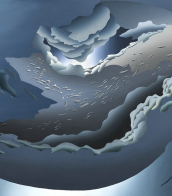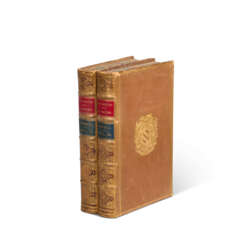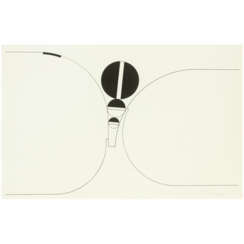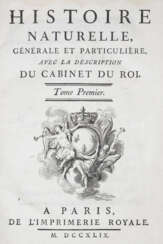клерк



Pierre Clerk is a contemporary artist who works primarily in painting and sculpture.
Pierre Clerk's abstract, geometrical works are held in many museums and galleries in the United States and Canada.


James Clerk Maxwell was a British physicist, mathematician and mechanic, and a Fellow of the Royal Society of London.
James Clerk Maxwell was one of the most influential scientists of the nineteenth century. His theoretical work on electromagnetism and light largely determined the direction physics would take in the early 20th century. Maxwell conducted research in a number of areas, but was particularly preoccupied with the nature of Saturn's rings. In 1860 he obtained a professorship at King's College, London, and it was his years there that were most fruitful. For his electromagnetic theory,
Maxwell is most often credited with fundamentally changing the course of physics. Maxwell saw electricity not just as another branch of physics, but "as an aid to the interpretation of nature." He showed the importance of electricity to physics as a whole by advancing "the important hypothesis that light and electricity are the same in their ultimate nature." This theory, one of the most important discoveries in nineteenth-century physics, was Maxwell's greatest achievement and laid the foundation for Einstein's theory of relativity.


James Clerk Maxwell was a British physicist, mathematician and mechanic, and a Fellow of the Royal Society of London.
James Clerk Maxwell was one of the most influential scientists of the nineteenth century. His theoretical work on electromagnetism and light largely determined the direction physics would take in the early 20th century. Maxwell conducted research in a number of areas, but was particularly preoccupied with the nature of Saturn's rings. In 1860 he obtained a professorship at King's College, London, and it was his years there that were most fruitful. For his electromagnetic theory,
Maxwell is most often credited with fundamentally changing the course of physics. Maxwell saw electricity not just as another branch of physics, but "as an aid to the interpretation of nature." He showed the importance of electricity to physics as a whole by advancing "the important hypothesis that light and electricity are the same in their ultimate nature." This theory, one of the most important discoveries in nineteenth-century physics, was Maxwell's greatest achievement and laid the foundation for Einstein's theory of relativity.


James Clerk Maxwell was a British physicist, mathematician and mechanic, and a Fellow of the Royal Society of London.
James Clerk Maxwell was one of the most influential scientists of the nineteenth century. His theoretical work on electromagnetism and light largely determined the direction physics would take in the early 20th century. Maxwell conducted research in a number of areas, but was particularly preoccupied with the nature of Saturn's rings. In 1860 he obtained a professorship at King's College, London, and it was his years there that were most fruitful. For his electromagnetic theory,
Maxwell is most often credited with fundamentally changing the course of physics. Maxwell saw electricity not just as another branch of physics, but "as an aid to the interpretation of nature." He showed the importance of electricity to physics as a whole by advancing "the important hypothesis that light and electricity are the same in their ultimate nature." This theory, one of the most important discoveries in nineteenth-century physics, was Maxwell's greatest achievement and laid the foundation for Einstein's theory of relativity.




Jacques Sébastien Leclerc, or Le Clerc, known as Leclerc des Gobelins, was a French painter; known for mythological and genre scenes.


Jacques Sébastien Leclerc, or Le Clerc, known as Leclerc des Gobelins, was a French painter; known for mythological and genre scenes.


Jacques Sébastien Leclerc, or Le Clerc, known as Leclerc des Gobelins, was a French painter; known for mythological and genre scenes.






Jean Leclerc was a French painter known for his significant contributions to the Baroque art movement, particularly in the style known as tenebrism. Born and died in Nancy, Duchy of Lorraine, Leclerc is celebrated for his expertise in creating nocturnal light effects and the luminosity within his scenes. His education under the Venetian master Carlo Saraceni greatly influenced his artistic direction.
Although only a few authenticated paintings of Jean Leclerc's exist today, his legacy is also preserved through numerous etchings and engravings. His works, like "The concert," "The adoration of the shepherds," and "Doge Enrico Dandolo Recruiting for the Crusade," showcase his mastery in handling religious and historical subjects with a dramatic interplay of light and shadow.
For art enthusiasts and experts, Jean Leclerc's oeuvre offers a fascinating glimpse into the Baroque era's stylistic nuances and the broader tenebrist movement. His works are essential for understanding the artistic transitions and cultural dialogues of the 17th century in European art.
To dive deeper into Jean Leclerc's artistry and view some of his works, you can explore collections and detailed discussions on websites like the Yale University Art Gallery and the National Gallery of Art.
For collectors and art historians keen on updates related to Jean Leclerc's works or upcoming exhibitions featuring his art, subscribing to newsletters from reputable art galleries or museums can provide valuable insights and alerts on new discoveries, sales, and auction events connected to Leclerc's legacy.













































































